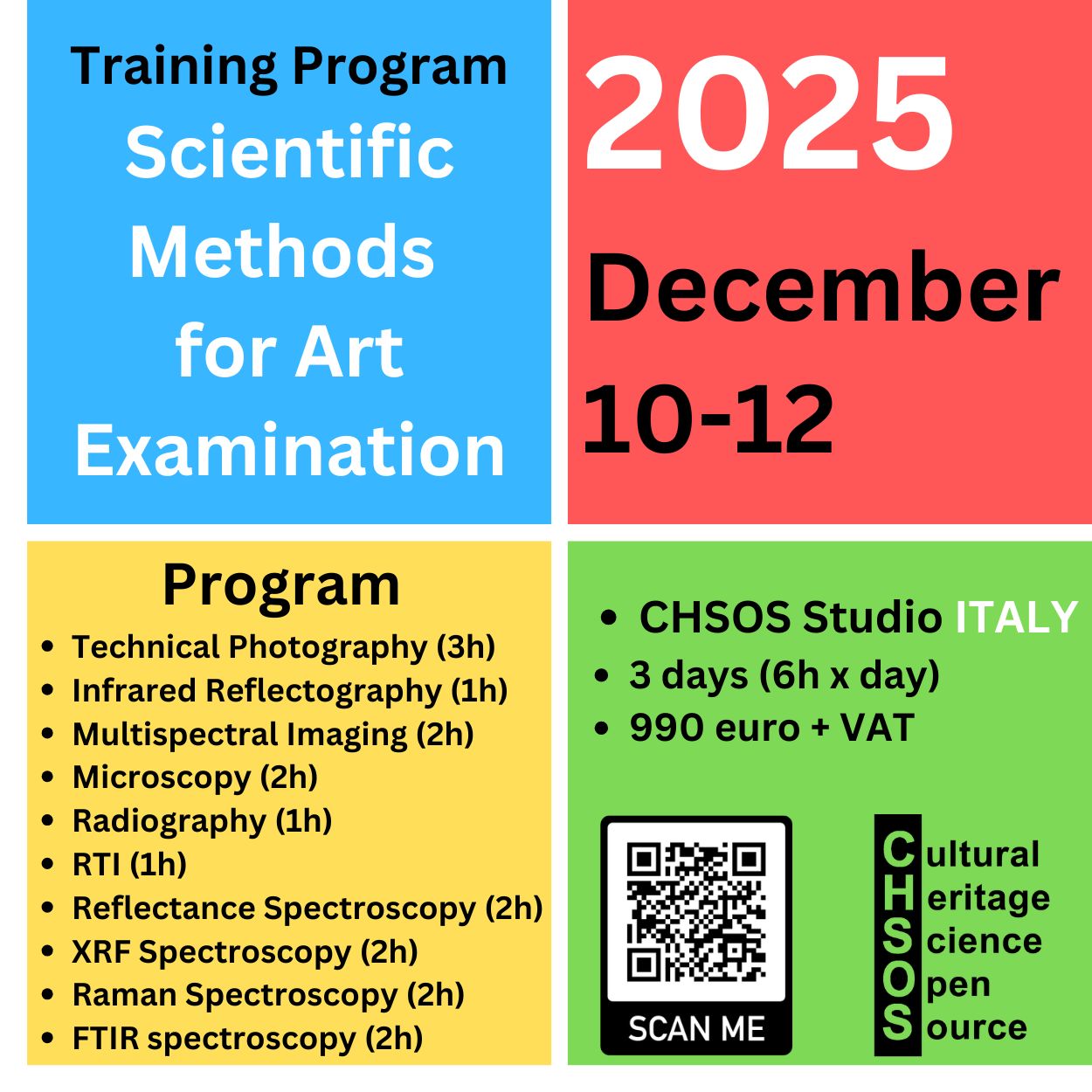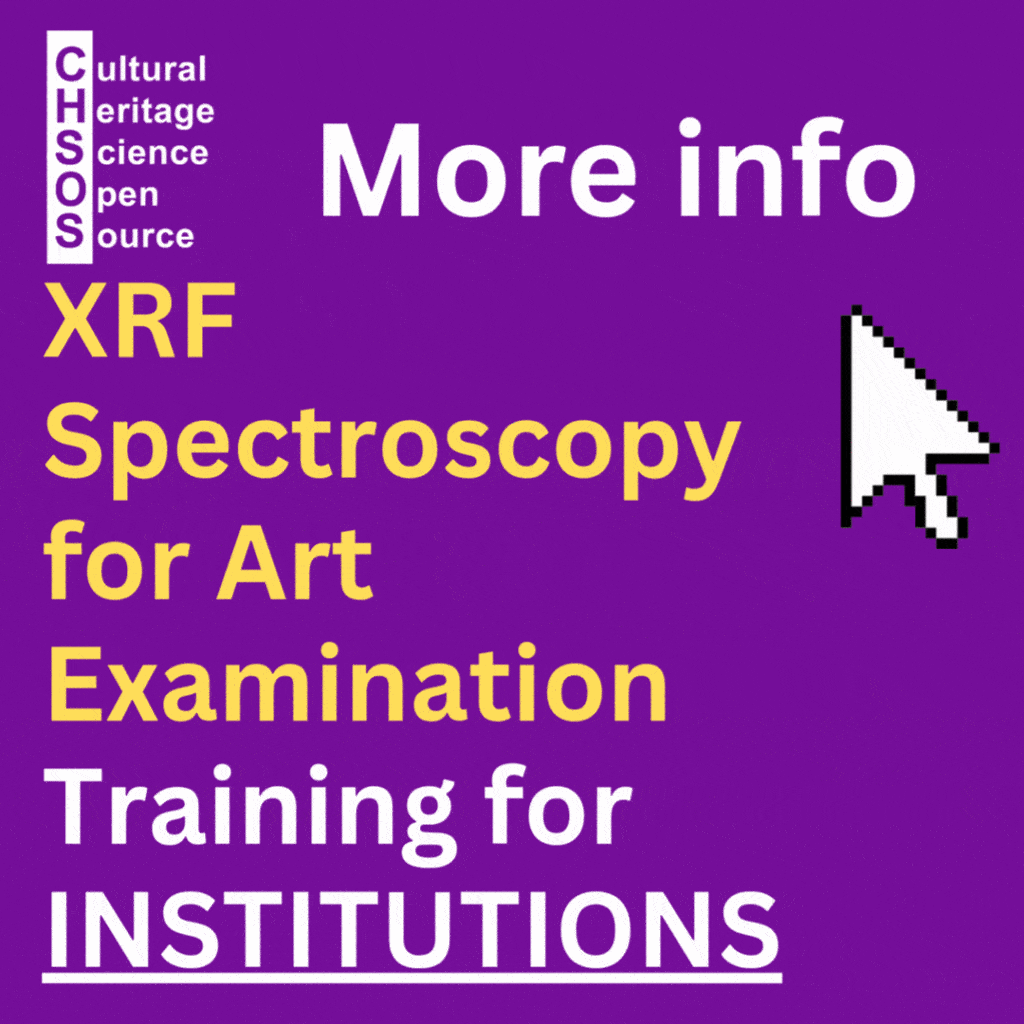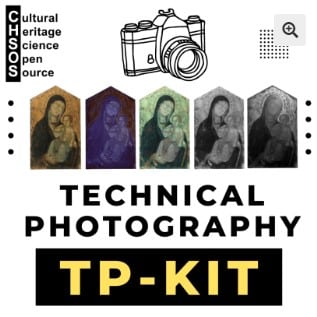Home » Products » Pigments Checkers » IRR – Infrared Reflectography – Pigments Checker “Modern & Contemporary Art”
Infrared Reflectography on Pigments Checker – Modern and Contemporary Art
This page presents far-infrared imaging methods applied to the Pigments Checker – Modern and Contemporary Art. It includes both infrared reflectography (IRR) and the less common infrared reflectography fluorescence (IRRF), carried out with visible (IRR-VIS) and ultraviolet (IRR-UV) illumination. While IRR is traditionally used to reveal underdrawings and changes beneath the paint layers, IRRF has proven effective in mapping certain modern pigments.

IRR - Infrared Reflectography

IRRF - Infrared Reflectography Fluorescence
Manganese blue and Nickel Titanium yellow in Stamps and Art


IRRF-UV
Pigments showing IRRF with the UV lamp Fabrizio (in descending emission-intensity order):
PY 53 – nickel titanium yellow
PB 33- manganese blue
cadmium red (TP-MSI calibration card)
PG 36 – phthalo green YS
IRRF-VIS
Pigments showing IRRF with the VIS lamp Alice(in descending emission-intensity order):
PB 33- manganese blue
PY 53 – nickel titanium yellow
cadmium red (TP-MSI calibration card)
PG 36 – phthalo green YS
Manganese blue and Nickel Titanium yellow
Manganese Blue (barium manganate, PB33) and Nickel Titanium Yellow (nickel titanate, PY53) are modern inorganic pigments valued for their exceptional stability and purity of hue. Manganese Blue, introduced in the 1930s, produces a clear, luminous cyan that resists fading and chemical reaction. Artists prized it for skies, water, and transparent glazes, while printers used it as a stable alternative to Prussian or phthalocyanine blues. Nickel Titanium Yellow, developed in the 1960s, offers an opaque, greenish-yellow tone that replaced the more toxic cadmium and chrome yellows. Its heat and lightfastness made it ideal for industrial and printing applications. Both pigments entered stamp production in the mid to late twentieth century, reflecting the postal industry’s shift toward safer and more durable synthetic colors. In philately and conservation science, their detection by XRF or Raman spectroscopy reveals evolving pigment technologies in modern stamp printing. Manganese Blue and Nickel Titanium Yellow also mark a transition in material history—from mineral and organic colorants to engineered oxides designed for permanence and environmental safety. Their presence in artworks and stamps symbolizes modern chemistry’s impact on visual culture, uniting industrial innovation with aesthetic needs for brightness, stability, and non-toxicity across artistic and commercial printing practices.
-
Pigments Checker (TP-MSI calibration card included)
730,00€ Select options This product has multiple variants. The options may be chosen on the product page
Add Your Heading Text Here
Resources
National Gallery (London) – Raphael’s Madonna of the Pinks
The National Gallery has pioneered the use of infrared imaging to study underdrawings in paintings. For example, the gallery’s infrared imaging study of Raphael’s Madonna of the Pinks (~1506–07), revealing an exquisite underdrawing beneath the paint layers.








